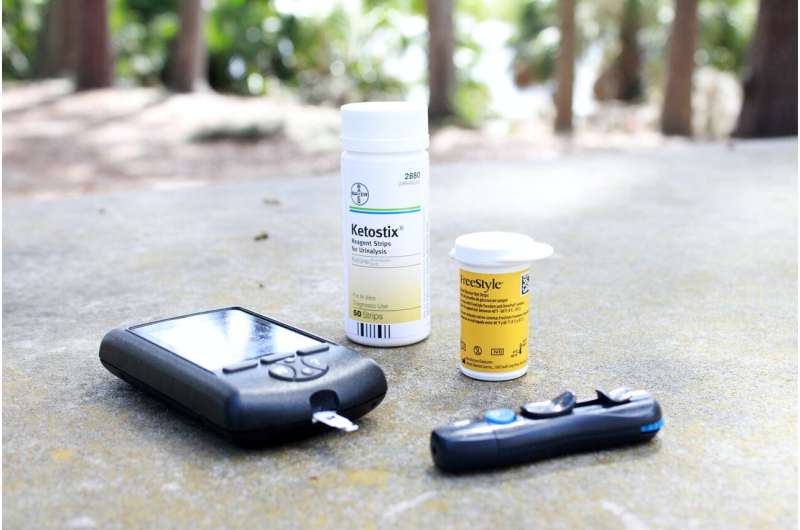Q&A: Childhood diabetes

DEAR MAYO CLINIC: I recently noticed that my 7-year-old daughter has been drinking more water than usual, even though her activity has not increased. A neighbor mentioned that I should have her screened for diabetes. My daughter is not overweight nor does she eat excessive amounts of sugar. Should I take her to her doctor?
ANSWER: Hydration is important for adults and children. But anytime children act out of the ordinary, it's logical to be concerned about their health. You should contact your daughter's pediatrician or primary health care provider to talk about any changes that may be a sign of a more serious condition.
More than 34 million Americans are living with diabetes. And many of them are children and adolescents. Cases of Type 1 diabetes and Type 2 diabetes are on the rise among those 20 and under in the U.S., according to a study last year by the Centers for Disease Control and Prevention. Diabetes is one of the most common chronic diseases among children and teens, and is the result of the body not being able to process sugar, or glucose, properly.
Most of the sugar in people's bodies comes from the food they eat. When food is digested, sugar enters the bloodstream. Moving sugar from the bloodstream to the body's cells requires the hormone insulin. People with diabetes lack insulin or are unable to process insulin.
There are two types of childhood diabetes.
Type 1 diabetes, which is the most common in children, is an autoimmune condition in which the body no longer produces insulin. The exact cause of Type 1 diabetes is unknown. There's no cure for Type 1 diabetes, but it can be managed. Advances in blood sugar monitoring and insulin delivery have improved blood sugar management and quality of life for children with Type 1 diabetes. This type of diabetes is not caused by being overweight, eating too much sugar or not taking part in enough physical activity.
Type 2 diabetes is a chronic disease that also affects the way the body processes sugar, but this type is fueled by obesity. Although Type 2 diabetes occurs more commonly in adults, an increasing number of children are affected due to the obesity epidemic. However, most children do not develop Type 2 diabetes before puberty.
While the exact cause of Type 2 diabetes is unknown, family history and genetics appear to play an important role. Inactivity and excess fat, especially fat around the belly, also seem to be important factors. Often, changes in diet and exercise are enough to manage Type 2 diabetes in children. However, oral medications and insulin treatment may be needed for some children.
Although diabetes may not run in your family, it is still possible that your daughter could develop childhood diabetes. You should talk with her about other signs or symptoms that you may not have noticed, or she may not have mentioned. Being able to recognize the signs and symptoms of the disease can help get an earlier diagnosis and ultimately a chance of a better outcome.
Increased thirst and increased urination are often the first signs that something is amiss. Excess sugar building up in your child's bloodstream pulls fluid from tissues. As a result, your child becomes thirstier—and drinks more and uses the bathroom more than usual.
Other symptoms for children might be fatigue, weight loss and increased hunger. The lack of sugar in their cells can cause children to become exhausted. If you begin to notice that your daughter is showing signs of fatigue but her activity has not increased, that is an area of concern. Also, some children may lose weight, as they're not able to store what they're eating in their body anymore without insulin. So weight loss can be another sign of diabetes.
Symptoms of Type 1 diabetes tend to develop rapidly in young people; whereas, Type 2 diabetes symptoms develop over time and may be so gradual that you do not notice. For children with Type 2 diabetes, other symptoms might include blurry vision and darkened areas of the skin, particularly around the neck or in the armpits.
Young people who develop diabetes are at a higher risk of health challenges throughout their lives. Complications from diabetes may include high blood pressure, high cholesterol, heart disease, increased risk for stroke and kidney disease, as well as other conditions.
Even if your daughter has not exhibited any other signs of diabetes, you should call her pediatrician or health care provider to determine next steps. He or she may recommend blood and urine tests. If your daughter is found to have diabetes, you likely will be referred to a pediatric endocrinologist for ongoing care. If she is found to be at high risk or on the cusp for diabetes, you also may want to meet with a specialist to develop a proactive plan to lower her risk for the future.
As scary as it might sound to have a child diagnosed with diabetes, the condition is manageable, and patients can go on to be active and have good quality of life.
©2021 Mayo Clinic News Network
Distributed by Tribune Content Agency, LLC




















